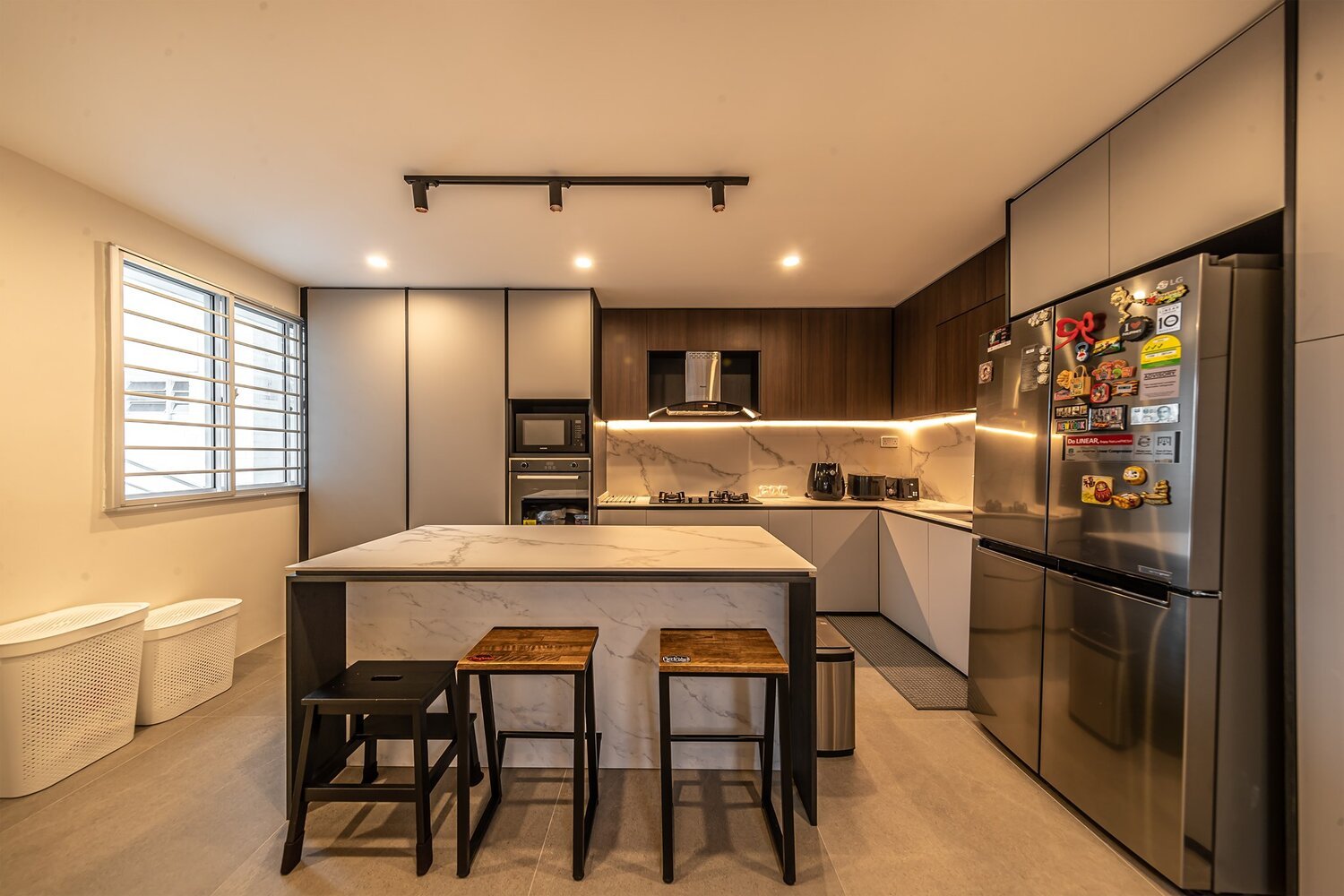
When it comes to remodeling a kitchen, one of the crucial decisions homeowners face is whether to opt for an open or closed kitchen concept. This choice can significantly impact the functionality, aesthetics, and overall atmosphere of the space. While an open kitchen eliminates barriers and encourages socialization, a closed kitchen offers privacy and containment. To make an informed decision, it’s important to delve deeper into the differences between these two concepts and understand the pros and cons of each. So, let’s explore the world of open and closed kitchens and discover the key factors to consider when determining the ideal kitchen concept for your home.
The Allure of Open Kitchens:
Open kitchens have gained immense popularity in recent years due to their ability to foster connectivity and multitasking. By removing physical barriers between the cooking space and living room, open kitchens create a seamless transition and encourage interactions among family members and guests. Imagine preparing a delicious meal while engaging in conversations or helping your children with their homework. It’s the epitome of efficiency and togetherness. Furthermore, open kitchens enhance the visual appeal of your cooking space, maximizing natural light and ventilation, which results in a pleasant and inviting ambiance.
5 Room Resale HDB Kitchen Design at Yishun Blk 419
However, it’s important to acknowledge the drawbacks of open kitchens. Privacy can be a concern, as your messy countertops and dishes become visible to guests. Additionally, any clutter or disarray in the kitchen might affect the overall cleanliness and organization of your living room. The sounds and smells from cooking can also permeate throughout the house, which may not be desirable for everyone. Despite these limitations, open kitchens remain a popular choice for their functional and social advantages.
Embracing the Comfort of Closed Kitchens:
Closed kitchens, often associated with a more traditional approach, offer a sense of privacy and containment that can be appealing to many individuals. With walls on all sides, closed kitchens create a distinct separation from the rest of the living space, providing a sanctuary for culinary activities. The enclosed nature of this concept allows you to relish your cooking endeavors in peace, without the worry of prying eyes or lingering smells. Closed kitchens also offer additional storage space and cabinets, giving you the freedom to organize your kitchen essentials more efficiently.
While closed kitchens excel in privacy, they can limit seamless conversations and interactions with guests. Constantly shuttling between the kitchen and living room to serve dishes can disrupt the flow of socializing. The solid boundaries of closed kitchens might make the space feel smaller and hinder the flow of natural light, creating a potentially confined atmosphere. However, if privacy and containment are your priorities, closed kitchens can be an excellent choice.
Striking a Balance:
Rather than rigidly adhering to either extreme, many homeowners seek a middle ground by incorporating elements of both open and closed kitchen concepts. This hybrid approach allows for a harmonious blend of functionality, privacy, and sociability. One popular solution is to opt for partially open kitchens, where a partial wall or an island acts as a visual and physical barrier, providing a sense of separation while maintaining a connection with the rest of the living space. This compromise retains the benefits of an open kitchen while addressing concerns about privacy and containment.
When considering the balance between open and closed kitchens, it’s crucial to evaluate your lifestyle, family dynamics, and personal preferences. Assess how you envision using the space, the level of privacy you desire, and the importance of socializing while cooking. Additionally, take into account the overall layout of your home and how the kitchen integrates with adjacent rooms.
Final Verdict:
Choosing between an open or closed kitchen concept involves weighing the pros and cons of each option. Open kitchens excel in fostering social interactions and multitasking while enhancing the visual appeal of the space. On the other hand, closed kitchens provide privacy, containment, and a more traditional ambiance. Striking a balance between these two concepts by incorporating elements of both can offer the best of both worlds. Ultimately, the perfect kitchen concept for your home depends on your unique lifestyle, preferences, and the dynamics of your household. By carefully considering these factors, you can create a kitchen that not only meets your practical needs but also becomes a hub of warmth, connection, and culinary delight.
What do you think about this? Let us know in the comments.
Do you have tips you want to share? Get in touch with us via email at [email protected]

